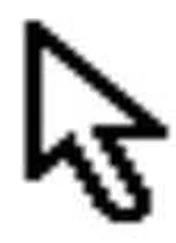Andy Pike - DirectX 8 Programming Tutorial
Здесь есть возможность читать онлайн «Andy Pike - DirectX 8 Programming Tutorial» весь текст электронной книги совершенно бесплатно (целиком полную версию без сокращений). В некоторых случаях можно слушать аудио, скачать через торрент в формате fb2 и присутствует краткое содержание. Жанр: Программирование, на английском языке. Описание произведения, (предисловие) а так же отзывы посетителей доступны на портале библиотеки ЛибКат.
- Название:DirectX 8 Programming Tutorial
- Автор:
- Жанр:
- Год:неизвестен
- ISBN:нет данных
- Рейтинг книги:5 / 5. Голосов: 1
-
Избранное:Добавить в избранное
- Отзывы:
-
Ваша оценка:
- 100
- 1
- 2
- 3
- 4
- 5
DirectX 8 Programming Tutorial: краткое содержание, описание и аннотация
Предлагаем к чтению аннотацию, описание, краткое содержание или предисловие (зависит от того, что написал сам автор книги «DirectX 8 Programming Tutorial»). Если вы не нашли необходимую информацию о книге — напишите в комментариях, мы постараемся отыскать её.
DirectX 8 Programming Tutorial — читать онлайн бесплатно полную книгу (весь текст) целиком
Ниже представлен текст книги, разбитый по страницам. Система сохранения места последней прочитанной страницы, позволяет с удобством читать онлайн бесплатно книгу «DirectX 8 Programming Tutorial», без необходимости каждый раз заново искать на чём Вы остановились. Поставьте закладку, и сможете в любой момент перейти на страницу, на которой закончили чтение.
Интервал:
Закладка:
A Vertex Buffer is a memory buffer for storing vertices. A vertex buffer can stored vertices of any format. Once your vertices are stored in a vertex buffer you can perform operations such as: rendering, transforming and clipping.
To represent colours in Direct X, we use the D3DCOLOR_XRGB macro. There are three parameters: Red, Green and Blue. These parameters are integer values between 0 and 255. By specifying different red, green and blue values (mixing colours) you can make any colour you need.
For example:
D3DCOLOR_XRGB(0, 0, 0) is black (no colour)
D3DCOLOR_XRGB(255, 255, 255) is white (full colour)
D3DCOLOR_XRGB(0, 255, 0) is bright green (no red, full green, no blue)
D3DCOLOR_XRGB(100, 20, 100) is dark purple (100 red, 20 green, 100 blue)
Here is the code for this tutorial. It's just the same as the code from the first tutorial, except for a few modifications:
#include
LPDIRECT3D8 g_pD3D = NULL;
LPDIRECT3DDEVICE8 g_pD3DDevice = NULL;
LPDIRECT3DVERTEXBUFFER8 g_pVertexBuffer = NULL; // Buffer to hold vertices
struct CUSTOMVERTEX {
FLOAT x, y, z, rhw; // The transformed position for the vertex.
DWORD colour; // The vertex colour.
};
#define D3DFVF_CUSTOMVERTEX (D3DFVF_XYZRHW|D3DFVF_DIFFUSE)
#define SafeRelease(pObject) if(pObject != NULL) {pObject->Release(); pObject=NULL;}
HRESULT InitialiseD3D(HWND hWnd) {
//First of all, create the main D3D object. If it is created successfully we
//should get a pointer to an IDirect3D8 interface.
g_pD3D = Direct3DCreate8(D3D_SDK_VERSION);
if (g_pD3D == NULL) {
return E_FAIL;
}
//Get the current display mode
D3DDISPLAYMODE d3ddm;
if (FAILED(g_pD3D->GetAdapterDisplayMode(D3DADAPTER_DEFAULT, &d3ddm))) {
return E_FAIL;
}
//Create a structure to hold the settings for our device
D3DPRESENT_PARAMETERS d3dpp;
ZeroMemory(&d3dpp, sizeof(d3dpp));
//Fill the structure.
//We want our program to be windowed, and set the back buffer to a format
//that matches our current display mode
d3dpp.Windowed = TRUE;
d3dpp.SwapEffect = D3DSWAPEFFECT_COPY_VSYNC;
d3dpp.BackBufferFormat = d3ddm.Format;
//Create a Direct3D device.
if (FAILED(g_pD3D->CreateDevice(D3DADAPTER_DEFAULT, D3DDEVTYPE_HAL, hWnd, D3DCREATE_SOFTWARE_VERTEXPROCESSING, &d3dpp, &g_pD3DDevice))) {
return E_FAIL;
}
return S_OK;
}
HRESULT InitialiseVertexBuffer() {
VOID* pVertices;
//Store each point of the triangle together with it's colour
CUSTOMVERTEX cvVertices[] = {
{250.0f, 100.0f, 0.5f, 1.0f, D3DCOLOR_XRGB(255, 0, 0),}, //Vertex 1 – Red (250, 100)
{400.0f, 350.0f, 0.5f, 1.0f, D3DCOLOR_XRGB(0, 255, 0),}, //Vertex 2 – Green (400, 350)
{100.0f, 350.0f, 0.5f, 1.0f, D3DCOLOR_XRGB(0, 0, 255),}, //Vertex 3 – Blue (100, 350)
};
//Create the vertex buffer from our device
if (FAILED(g_pD3DDevice->CreateVertexBuffer(3 * sizeof(CUSTOMVERTEX), 0, D3DFVF_CUSTOMVERTEX, D3DPOOL_DEFAULT, &g_pVertexBuffer))) {
return E_FAIL;
}
//Get a pointer to the vertex buffer vertices and lock the vertex buffer
if (FAILED(g_pVertexBuffer->Lock(0, sizeof(cvVertices), (BYTE**)&pVertices, 0))) {
return E_FAIL;
}
//Copy our stored vertices values into the vertex buffer
memcpy(pVertices, cvVertices, sizeof(cvVertices));
//Unlock the vertex buffer
g_pVertexBuffer->Unlock();
return S_OK;
}
void Render() {
if (g_pD3DDevice == NULL) {
return;
}
//Clear the backbuffer to black
g_pD3DDevice->Clear(0, NULL, D3DCLEAR_TARGET, D3DCOLOR_XRGB(0, 0, 0), 1.0f, 0);
//Begin the scene
g_pD3DDevice->BeginScene();
//Rendering our triangle
g_pD3DDevice->SetStreamSource(0, g_pVertexBuffer, sizeof(CUSTOMVERTEX));
g_pD3DDevice->SetVertexShader(D3DFVF_CUSTOMVERTEX);
g_pD3DDevice->DrawPrimitive(D3DPT_TRIANGLELIST, 0, 1);
//End the scene
g_pD3DDevice->EndScene();
//Filp the back and front buffers so that whatever has been rendered on the back buffer
//will now be visible on screen (front buffer).
g_pD3DDevice->Present(NULL, NULL, NULL, NULL);
}
void CleanUp() {
SafeRelease(g_pVertexBuffer);
SafeRelease(g_pD3DDevice);
SafeRelease(g_pD3D);
}
void GameLoop() {
//Enter the game loop
MSG msg;
BOOL fMessage;
PeekMessage(&msg, NULL, 0U, 0U, PM_NOREMOVE);
while (msg.message != WM_QUIT) {
fMessage = PeekMessage(&msg, NULL, 0U, 0U, PM_REMOVE);
if (fMessage) {
//Process message
TranslateMessage(&msg);
DispatchMessage(&msg);
} else {
//No message to process, so render the current scene
Render();
}
}
}
//The windows message handler
LRESULT WINAPI WinProc(HWND hWnd, UINT msg, WPARAM wParam, LPARAM lParam) {
switch(msg) {
case WM_DESTROY:
PostQuitMessage(0);
return 0;
break;
case WM_KEYUP:
switch (wParam) {
case VK_ESCAPE:
//User has pressed the escape key, so quit
DestroyWindow(hWnd);
return 0;
break;
}
break;
}
return DefWindowProc(hWnd, msg, wParam, lParam);
}
//Application entry point
INT WINAPI WinMain(HINSTANCE hInst, HINSTANCE, LPSTR, INT) {
//Register the window class
WNDCLASSEX wc = {
sizeof(WNDCLASSEX), CS_CLASSDC, WinProc, 0L, 0L, GetModuleHandle(NULL), NULL, NULL, NULL, NULL, "DX Project 2", NULL
};
RegisterClassEx(&wc);
//Create the application's window
HWND hWnd = CreateWindow("DX Project 2", "www.andypike.com: Tutorial 2", WS_OVERLAPPEDWINDOW, 50, 50, 500, 500, GetDesktopWindow(), NULL, wc.hInstance, NULL);
//Initialize Direct3D
if (SUCCEEDED(InitialiseD3D(hWnd))) {
//Show our window
ShowWindow(hWnd, SW_SHOWDEFAULT);
UpdateWindow(hWnd);
//Initialize Vertex Buffer
if (SUCCEEDED(InitialiseVertexBuffer())) {
Интервал:
Закладка:
Похожие книги на «DirectX 8 Programming Tutorial»
Представляем Вашему вниманию похожие книги на «DirectX 8 Programming Tutorial» списком для выбора. Мы отобрали схожую по названию и смыслу литературу в надежде предоставить читателям больше вариантов отыскать новые, интересные, ещё непрочитанные произведения.
Обсуждение, отзывы о книге «DirectX 8 Programming Tutorial» и просто собственные мнения читателей. Оставьте ваши комментарии, напишите, что Вы думаете о произведении, его смысле или главных героях. Укажите что конкретно понравилось, а что нет, и почему Вы так считаете.









